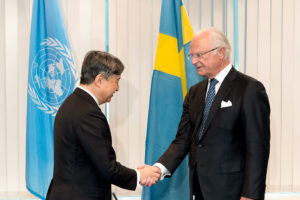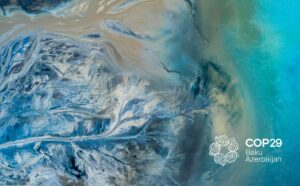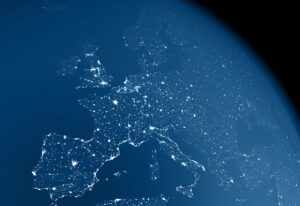Slow, slow, quick, quick, slow – the Climate debate Foxtrot
An image of a sculpture by a Spanish street artist Isaac Cordal spread across social media last week. The sculpture was interpreted by many as ”Politicians discussing global warming” and is an illustrative picture of the slow progress on the climate negotiations while the impact from climate change such as sea level rise becomes increasingly evident.
At the same time, the United Nations Framework Convention on Climate Change (UNFCCC) recently celebrated 20 years since entering into force. The cooperative efforts by UNFCCC Parties to limit the emission of greenhouse gases have indeed been slow in many ways and the escalating negative impacts from Climate Change has become increasingly evident. Critical weather events such as Typhoon Haiyan in the Philippines, America’s record-breaking freeze, California’s year-long drought, and flooding in Europe have brought the attention of the global community to the need to prepare and respond to the escalating negative impacts from climate change.
The most recent IPCC report (March 2014) further reinforces that climate change extremes such as cyclones, draughts and floods have created huge negative impacts on human well-being. Examples such as damage to infrastructure, food security and water supply are outlined. The report also warns that climate change increases the risk of armed conflict around the world due to its worsening of poverty levels and increase of economic shocks.
The three times Pulitzer prize winning American journalist Thomas Loren Friedman, has written extensively on the strong links between climate change impacts, environmental stress and armed conflicts, focusing especially on the Middle East. According to Friedman one of the key factors for the uprising in Syria was the climate change created Syrian drought.
In the beginning of March, UNFCCC began a long series of negotiations and workshops to prepare for the next Conference of the Parties (COP20) in Lima December 2014. Much of the focus of discussions centre around “Loss and Damage” and is the culmination of several years of policy debate on the need of greater attention on unavoidable fact that climate change impacts are real. Discussions advise that current mitigation ambitions need to be fully prepared for the unavoidable impacts of climate change, such as the critical weather events mentioned above. Under the UNFCCC, the Warsaw International mechanism was also established with the aim of enhancing knowledge on the adverse effects of climate change, strengthening dialogue as well as enhancing action and support.
I took part in the sessions and can convey that the UNFCCC negotiations on Loss and Damage are intense; often heated and ongoing for several days, with discussions continuing until the early hours of the morning. The willingness of the negotiators to reach an agreement and a way forward is undoubtable, yet discussions often became stuck in what can be viewed as tedious details, such as the correct position of a comma. However, it is seemingly small insignificant details like this which are incredibly important as they can determine the clarity and interpretation of the text and obligations by countries.
During the negotiations, the Bolivian negotiator Juan Hoffmaister kept reminding us all about the purpose of the meeting; ‘To find meaningful solutions and support those segments of the global population that is already vulnerable to climate change.’
At the end of the four days of negotiations, some agreements are reached on core areas for further collaboration e.g. the management of risks, the need of sharing information, identification of capacity needs. But a final text and agreement is not in yet place. This discussion is set to continue at another meeting in the hope of agreeing on a final text.








